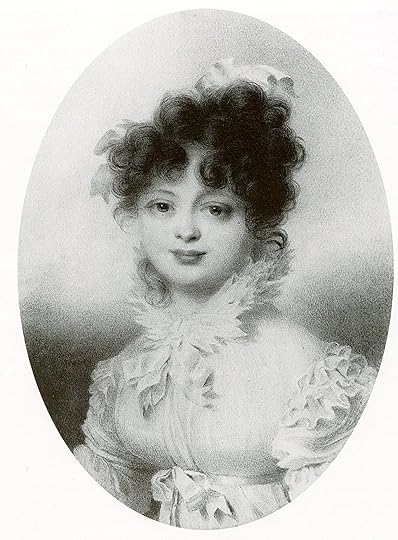Tyburn Guest Blogs
Because of The Tyburn Waltz, I've recently been invited to guest blog, which was a lot of fun. Here's the first, which appeared on The Regency World of Author Lesley-Anne McLeod (http://www.lesleyannemcleod.com/) on October 29.
GRAND DUCHESS CATHERINE OF OLDENBURG
In the course of doing historical research, one encounters intriguing characters. One of my current favorites is the Grand Duchess Catherine of Oldenburg.
In June of 1814, the allied sovereigns of Russia and Prussia arrived in London on a visit to the Prince Regent. With them came the two sons of the King of Prussia and a large number of victorious field-marshals, generals, princes, dukes, barons and the like.
They were a colorful cast of characters. Among them was the Grand Duchess of Oldenburg, favorite sister of Czar Alexander of Russia. She had actually been in London since March. On her arrival, the wife of the Russian ambassador, Countess Lieven, immediately foresaw trouble. 'The Grand Duchess has an immoderate thirst for authority and a very high, and possibly excessive, opinion of herself. I never saw a woman so possessed of the need to stir, act, put herself forward and eclipse others'.
In other words, the Grand Duchess was a pill.
She was also politically influential and during 1812-15 formed and paid to outfit a special regiment of chasseurs. She dominated a reactionary political group. In 1812 a group of conspirators unsuccessfully planned to depose Alexander and put her on the throne as Czarina Catherine III Pavlovna.
She was 'seductive in glance and manner', had 'a dazzling brilliance and freshness of complexion, a bright eye, and the most beautiful hair in the world… She expressed herself directly, with eloquence and grace, but she never abandoned the tone of command. Her mind was cultivated, brilliant and daring; her character firm and imperious'.
Catherine had a fondness for personal adornment. 'She was dressed in the most magnificent pearls I ever saw – scattered all over her head in large bunches and drops. She wore a necklace of egg-shaped pearls of enormous size.'
At the time of Catherine's arrival in London, the Regent was anxious for a match between his daughter Charlotte and the Prince of Orange. Such an alliance was regarded with alarm in St. Petersburg. Some believe that the Grand Duchess had been sent to London on a secret diplomatic mission, and that she was instrumental in the match being called off.
Another theory is that she came to England to cement the Anglo-Russian alliance by a second marriage. However, though impressed by Britain's material achievements (particularly the steam-engine) she was less enamored of its reigning house. The Dukes of Clarence and Sussex struck her as uncultivated boors. She and Prinny took each other in immediate dislike.
Her brother agreed. Alexander called the Regent 'a poor sort of prince'.
The Grand Duchess derived great pleasure from putting Prinny in positions of acute embarrassment. She stirred up trouble with regularity and created countless scenes; for example, leaving the room immediately the Prince's orchestra struck up. She was also subject to fainting fits. Her nerves had allegedly been ruined during the burning of Moscow, during which she was confined in a palace along with her youngest child.
The Grand Duchess outdid herself during a banquet held by the City of London at the Guildhall on June 18th. The occasion was supposed to have been exclusively masculine, but Catherine insisted on attending. When the musicians struck up a tune, she threatened to pitch one of her fits. Prinny was forced to beg that she allow the national anthem to be sung. At length she conceded, causing Lord Liverpool to remark that if people didn't know how to properly behave, they should stay at home.
No one was unhappy when the Grand Duchess departed English shores.
Catherine Pavlovna of Russia was the fourth daughter of Czar Paul I of Russia and Princess Sophie Dorothea of Württemberg. In 1809, she married Duke George of Oldenham, who died of typhoid in 1812. While in England she met Crown Prince William of Württemberg, who was married to Princess Charlotte of Bavaria. He divorced his wife and married Catherine in 1816, thereby making her the Queen of Württemberg.
She had two sons with her first husband and two daughters with her second.
Catherine died in January 1819 of a bacterial skin infection complicated by pneumonia. She was forty years old.
Filed under: Writing












